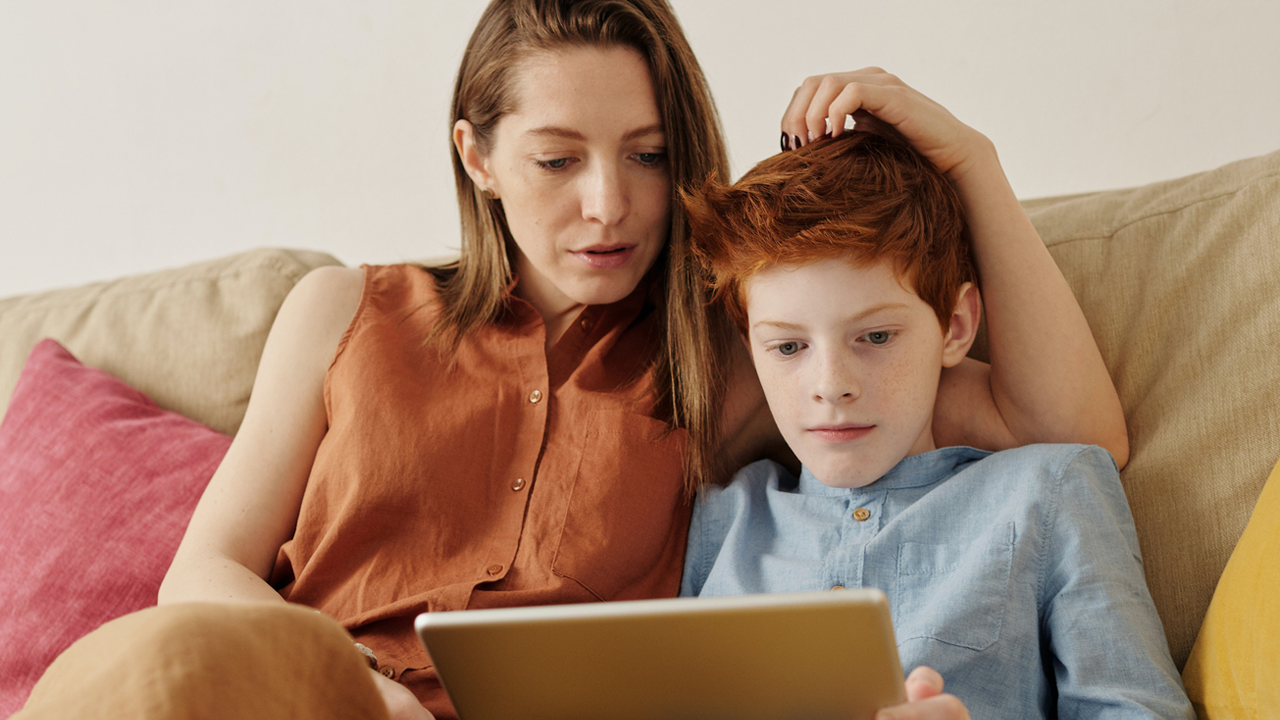
21 Apr Quality and context matters: Linking children’s digital media use and skills
By Renata Trefiglio Mendes Gomes, University of Nebraska–Lincoln
The COVID-19 pandemic, and the resulting school closures and limited activities, have led young children to use more digital media at home. Many parents and caregivers worry about the long-term effects of too much screen time and whether children’s digital media use may diminish their reading and writing skills.
But is media use really harmful to children’s skill building — and how can media be used in positive ways to support children’s learning and healthy development?
A recent Early Learning Network study explored links between joint media engagement — where parents and children interact with media together — and gains in first-graders’ language and literacy skills.
In this study, led by researchers at The Ohio State University and published in Frontiers in Psychology, media use refers to watching videos and playing apps and games that are non-instructional or not used as part of a classroom curriculum.
Results from the investigation suggest that moderate amounts of media use may not be detrimental, and may even be beneficial for language growth, at least in the first-grade year. Further, when it comes children’s exposure to media, context may be key. Another key implication from the work is that media use may be less detrimental for children’s literacy skills when supportive adults are involved and help them understand the content presented.
Here’s what they found:
- Children who used a moderate amount of media — an average of three hours per day — had the largest language gains.
- This finding highlights the potential educational value of media, which may expose children to new vocabulary and concepts in a similar way to children’s picture books.
- Children with the lowest and the highest levels of media use experienced smaller language gains.
- Media use was negatively associated with gains when children spent more than three to four hours daily in front of a digital device.
- Logging high levels of screen time at home may mean children are not being given ample opportunities to engage in more enriching activities.
- However, families who limit media use to extremely low levels may not be replacing that time at home with other enriching activities.
- Parent-child interaction during media use was an important factor in supporting children’s literacy skills.
- Although, media use was associated with lower literacy gains for children from families in which parent-child interaction during media use was rare, and media use was not associated with literacy gains for families in which parent-child interaction during media was more common.
What does this mean?
Children’s interactions with digital media may have positive effects in moderate amounts and with adult support.
However, it’s important to keep tabs on the amount of time children spend using media — not necessarily eliminate it — and balance their time at home with opportunities to learn and grow.
This study also highlights the importance of relationships, and having positive caregiver-child interactions while using media to counteract potential negative effects on children’s learning and development.
How can parents use media at home to support children’s learning and development?
1. Prioritize language-promoting activities you can do with your child at home that don’t involve screens, like book reading and having back-and-forth conversations.
2. Seek out high-quality, research-based media products and programs for children to engage with at home. Search Common Sense Media for age-appropriate programs and explore the PBS Kids network and app for a variety of educational games and programs that have been created with quality in mind.
3. Interact with your child while using media at home. Use digital apps and games alongside your child to expose them to new vocabulary and concepts, and enhance the learning experience by asking them questions.
4. Monitor the amount of time children spend using media at home. Find what works best for your family and consider whether your child’s media use is veering from the moderate range towards the more extreme range from their age level, potentially crowding out other enriching activities.
Dig deeper
- Watch the Crane Center for Early Childhood Research Forum on “Digital Media and Young Children’s Learning,” presented by Rebecca Dore, Ph.D., senior research associate in Early Childhood Education, The Ohio State University.
- Read full research paper published in Frontiers in Psychology, “Characteristics of Children’s Media Use and Gains in Language and Literacy Skills.”
- Make a family media plan with guidance from the American Academy of Pediatrics.

